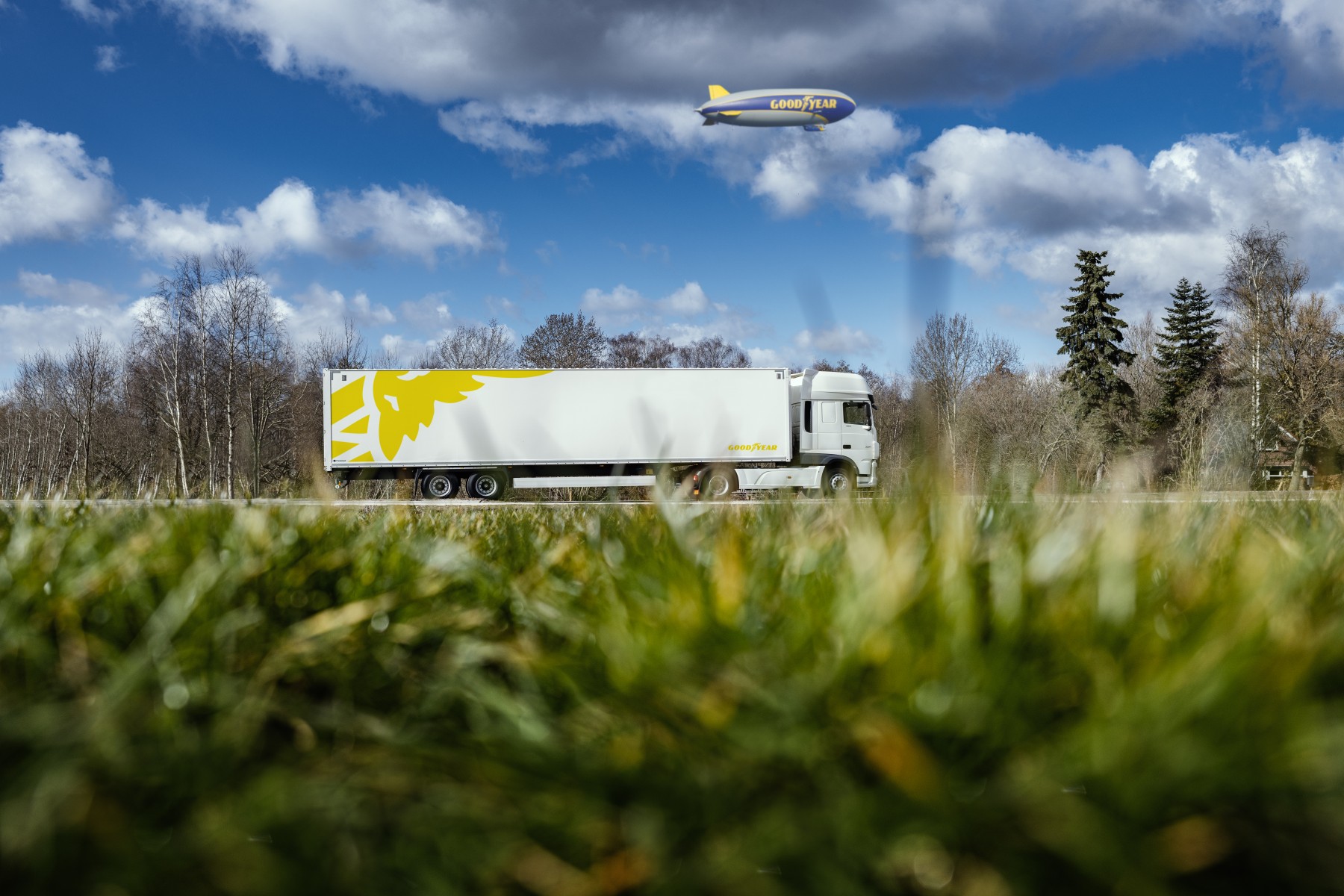Gearing up to leaner and greener transportation
Forecasts indicate that transport needs in the EU is driving greenhouse gas (GHG) emissions up. Demand is putting the logistics industry under increasing pressure to stay competitive and reduce its carbon footprint, assisting in the emission reductions necessary to realise 2030 targets or climate neutrality by 2050.
Projected to decarbonise faster than other transport groups, road freight still contributes up to 29.4% in 2018 to transport emissions. Trucks, buses and coaches are responsible for around 25% of EU road transport CO2 emissions and 6% of total EU emissions. Each day, we can all contribute making heavy-duty vehicles (HDVs) more sustainable.
The arrival of VECTO
The choice of all-electric trucks is growing. The Mercedes-Benz eActros and Volvo FE Electric have ranges of up to 200kms, the DAF CF Electric can travel 250kms. Electric HDVs are most suited for urban use, where truck tyres can be responsible for up to 20% of CO2 emissions. For long haul usage, gas-powered HDVs offer one efficiency option, with hydrogen technology presenting another. Comparable refuelling times and driving ranges to diesel are establishing fuel cell as a possible future logistics technology.
Since 2019 – when CO2 emissions in the transport sector were the same as in 1990 – the Vehicle Energy Consumption Calculation Tool (VECTO) has calculated the CO2 emissions and fuel consumption of trucks. Now mandatory for new trucks, an OEM will be fined for not meeting reduced emissions standards, down 15% by 2025 and 30% by 2030. Elements affecting HDV CO2 emissions include aerodynamics, body and trailer weight, engine type, gearbox, payload and tyres. More aerodynamic body designs and efficient engines are making HDVs less polluting, but other factors can contribute. Goodyear supports the sector's sustainability efforts by working with OEMs and hauliers.
Low-rolling resistance tyres save fuel and emissions
Choosing the most suitable vehicle for your operations is important, but there are other actions you can take to reduce your HDV carbon footprint. Low-rolling resistance (LRR) tyres directly impact vehicle emissions and fuel efficiency. Goodyear's FUELMAX range of tyres is designed to enhance fuel economy, help OEMS and fleets meet CO2 emissions targets and increase efficiency, while providing high mileage levels. A 100-truck fleet can lower its TCO up to €40,000 a year, through fuel-cost savings by using LRRs, and LRRs can reduce emissions up to 4%1.
OEMs are embracing new technologies to hit CO2 emissions goals. A sensor-based TPMS, such as the Goodyear Tyre Monitoring System will alert operators of tyre temperature or pressure changes, preventing downtime and increasing productivity. Under-inflated tyres increase fuel consumption, and even 1 bar of under-inflation can add 900 litres/year in additional costs per vehicle2. Monitored by telematic management systems, correct tyre pressures can increase uptime up to 90%3.
Multiple Life gives tyres an extended service life
The Goodyear Multiple Life concept of retreading and regrooving truck tyres reduces costs by as much as 30%, helping extend their service life by as much as 25%4. This concept is also more sustainable, and the number of tyres needing to be recycled is reduced. In addition, regular checks to ensure your fleet operates optimally can save costs and reduce your carbon footprint.
Correct tyre choice and maintenance is key to helping sustainability goals and increasing operational efficiency and excellence. Logistics fleets and their customers are demanding ever more sustainable solutions, and the sector is under increasing time and cost pressure. However, with the help of easy to implement data-based solutions and LRR tyres, operational efficiency can be increased while reducing the carbon footprint. The future is, in fact, now, and we have the power to make it a more sustainable one.
___
1. Potential savings based on a Goodyear calculation model, taking into account the rolling resistance performance of new tyres. Actual savings may vary based upon vehicle condition and maintenance, traffic conditions, driver behaviour and other factors.
2. Based on following assumptions: 150.000 km/year, 35L/100 km average fuel consumption; 1 bar less inflations = 5% increased rolling resistance = 1,5% higher fuel consumption; Diesel costs 1,15 EUR/l
3. Comparison of 50 fleets before and after installation of Goodyear TPMS in 2019
4. Based on internal analysis, comparing the use of two sets of new Goodyear tyres versus the Multi-Life-Concept using one set of new Goodyear tyres, regrooving, one set of Goodyear TreadMax tyres and again regroving.


